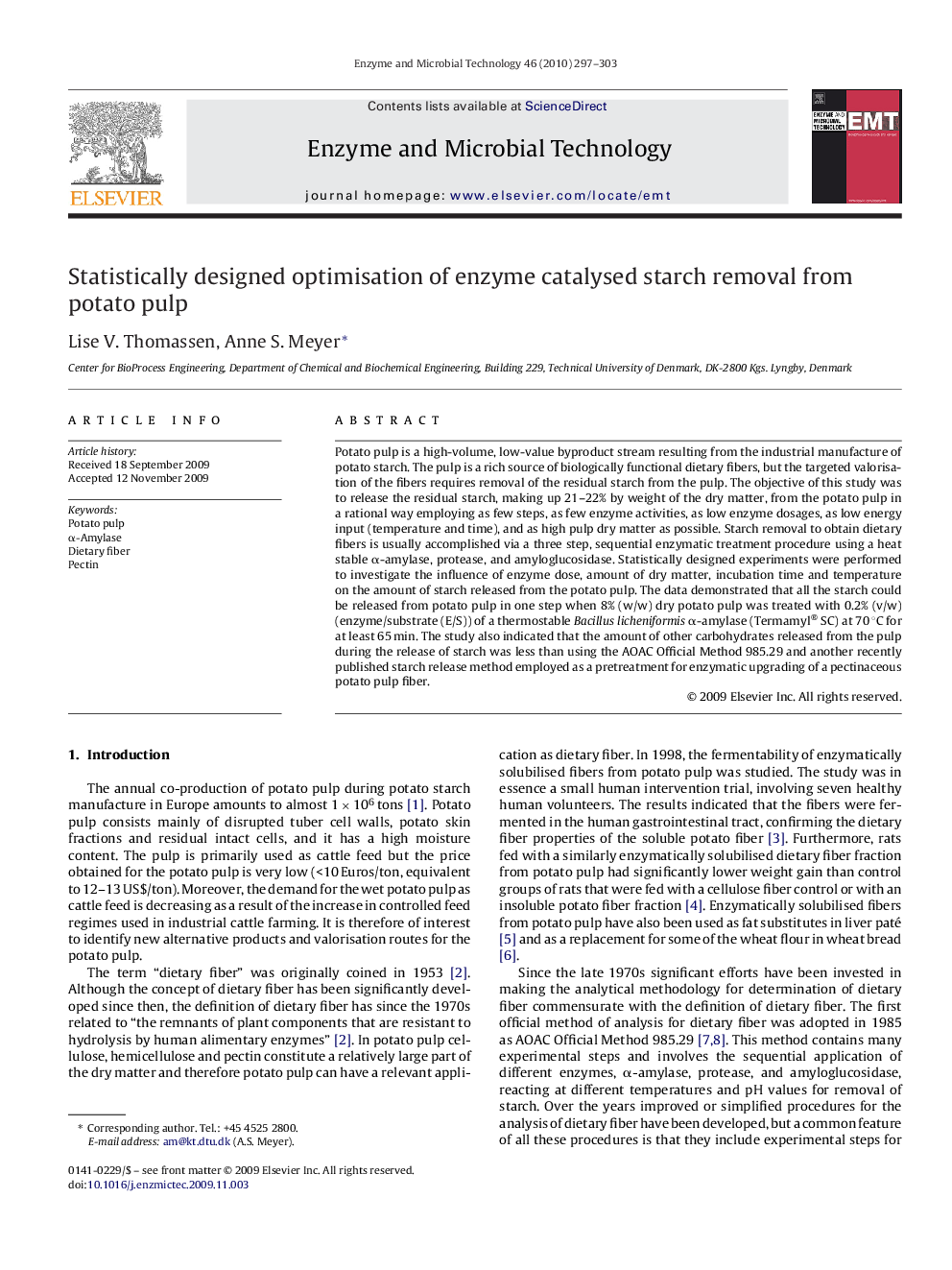| Article ID | Journal | Published Year | Pages | File Type |
|---|---|---|---|---|
| 17645 | Enzyme and Microbial Technology | 2010 | 7 Pages |
Potato pulp is a high-volume, low-value byproduct stream resulting from the industrial manufacture of potato starch. The pulp is a rich source of biologically functional dietary fibers, but the targeted valorisation of the fibers requires removal of the residual starch from the pulp. The objective of this study was to release the residual starch, making up 21–22% by weight of the dry matter, from the potato pulp in a rational way employing as few steps, as few enzyme activities, as low enzyme dosages, as low energy input (temperature and time), and as high pulp dry matter as possible. Starch removal to obtain dietary fibers is usually accomplished via a three step, sequential enzymatic treatment procedure using a heat stable α-amylase, protease, and amyloglucosidase. Statistically designed experiments were performed to investigate the influence of enzyme dose, amount of dry matter, incubation time and temperature on the amount of starch released from the potato pulp. The data demonstrated that all the starch could be released from potato pulp in one step when 8% (w/w) dry potato pulp was treated with 0.2% (v/w) (enzyme/substrate (E/S)) of a thermostable Bacillus licheniformis α-amylase (Termamyl® SC) at 70 °C for at least 65 min. The study also indicated that the amount of other carbohydrates released from the pulp during the release of starch was less than using the AOAC Official Method 985.29 and another recently published starch release method employed as a pretreatment for enzymatic upgrading of a pectinaceous potato pulp fiber.
